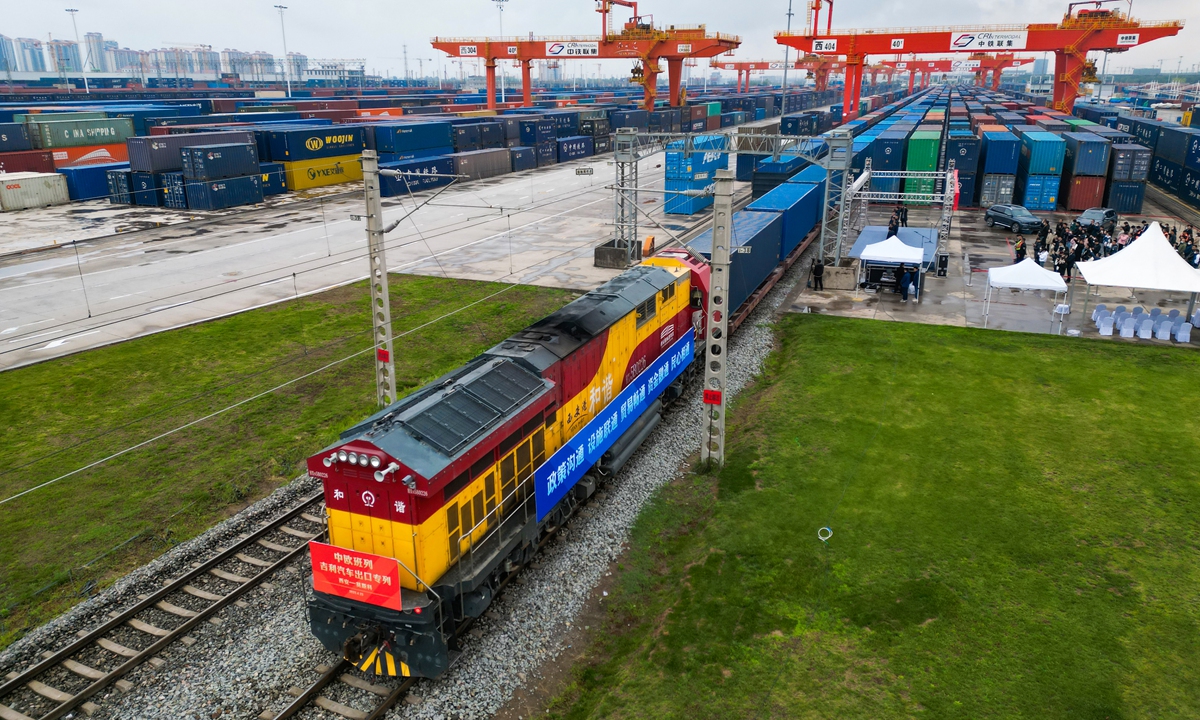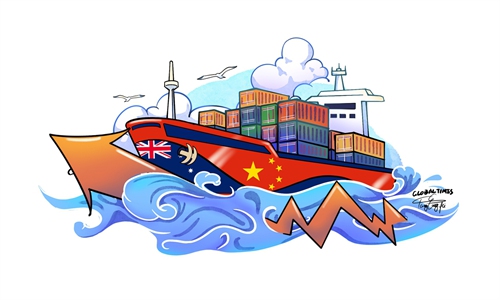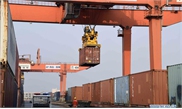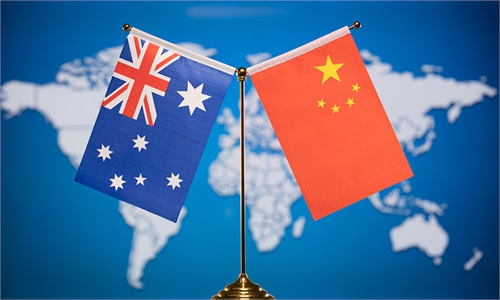China's trade grows 8.9% in April, beating market expectations
Demand to surge in H2 as rate hike cycle ends, structure improves

The special China-Europe freight train for Geely's autos Photo: Courtesy of Xi'an International Trade & Logistics Park
China's total trade rose by 8.9 percent year-on-year in April in yuan-denominated terms, slightly slowing from March but still beating market expectations, as production displayed strong resilience and recovered more quickly than anticipated.
Analysts said trade will continue to recover in the coming months with the holding of expos and the approaching end of the US rate hike cycle, which will help boost market demand.
Chinese customs on Tuesday said that exports grew 16.8 percent in April, a vivid display of Chinese products' popularity overseas. Imports slid 0.8 percent, which showed that domestic demand is still recovering, observers said.
In April alone, export growth slowed from 23.4 percent in March, but the rate was significantly faster compared with 0.9 percent in the first two months.
Total trade grew by 5.8 percent year-on-year to about 13 trillion yuan ($1.9 trillion) in the first four months, up from 4.8 percent in the first quarter, according to the customs data.
Hu Qimu, deputy secretary general of the digital real economies integration Forum 50, told the Global Times on Tuesday that China's trade had continued to surpass his expectations. He previously estimated that first-quarter trade growth would be in line with GDP growth of 4-5 percent.
"I think that the trade situation is a reflection of China's supply chain resilience. China hit the brakes on production last year due to COVID-19. Now, the production side has rebounded at a fast rate, faster than demand," Hu told the Global Times.
Overseas demand may have risen as a result of Chinese businesspeople actively seeking export orders, he said.
Experts and entrepreneurs said the slowdown in April didn't signal a trend reversal. Instead, a faster rebound will likely occur in the second half, they said.
Zhou Maohua, an economist at Everbright Bank, said that slower import growth in April might have reflected lower prices for bulk commodities.
"Although exports are facing headwinds in the second quarter, improvement is expected in the second half, mainly due to the gradual end of interest rate hikes in Europe and America, the optimization of China's foreign trade structure, positive trends in economic development and the weakening of the base effect," Zhou told the Global Times.
Zhu Qiucheng, CEO of Ningbo New Oriental Electric Industrial Development, an exporter of pet furniture and home furnishing products, told the Global Times that exports in the past two months had "obviously exceeded expectations."
"For exporters, the beginning of this year was a little difficult because of the lingering influence of the epidemic, but I expect a turn for the better in the second half of this year, a trend that I also sensed at the China Import and Export Fair," he said.
The uptrend is already emerging in trade data. For example, outward processing exports rose by 207 percent year-on-year in the first four months. This is proof that China is increasing exports of core parts to neighboring Asian countries for labor-intensive processing, Hu said.
"It shows an improved division of labor in global supply chains with China increasingly reducing reliance on low-cost processing. It also proves that China's competitiveness is rising in the manufacturing sector," Hu said.
Customs data also showed the diversification of China's trade sector as demand from many developed nations declined.
Trade with Association of Southeast Asian Nations (ASEAN) economies rose by 13.9 percent to 2.09 trillion yuan in the first four months, while trade with the US dropped by 4.2 percent.
Zhu said that the export market is changing, as US-bound exports face pressure, while demand from ASEAN and markets along the Belt and Road Initiative increases.
With China's trade sector expected to recover further, it will become a powerful driver of economic growth, Zhu said, adding that a 5 percent GDP rise should be "quite easy" to achieve in 2023.
"China's resilience in production and trade will continue to exert a monumental role in helping the global economic recovery. It will help contain inflation in the US and Europe, push the global resumption of production through stable supply of core parts, and drive up its trading partners' economy through large-scale imports," Hu said.
Uncertainties persist in China's trade sector, mainly due to risks in the US economy. "If the US banking crisis broadens, it will strike a blow to overseas demand," he said.



